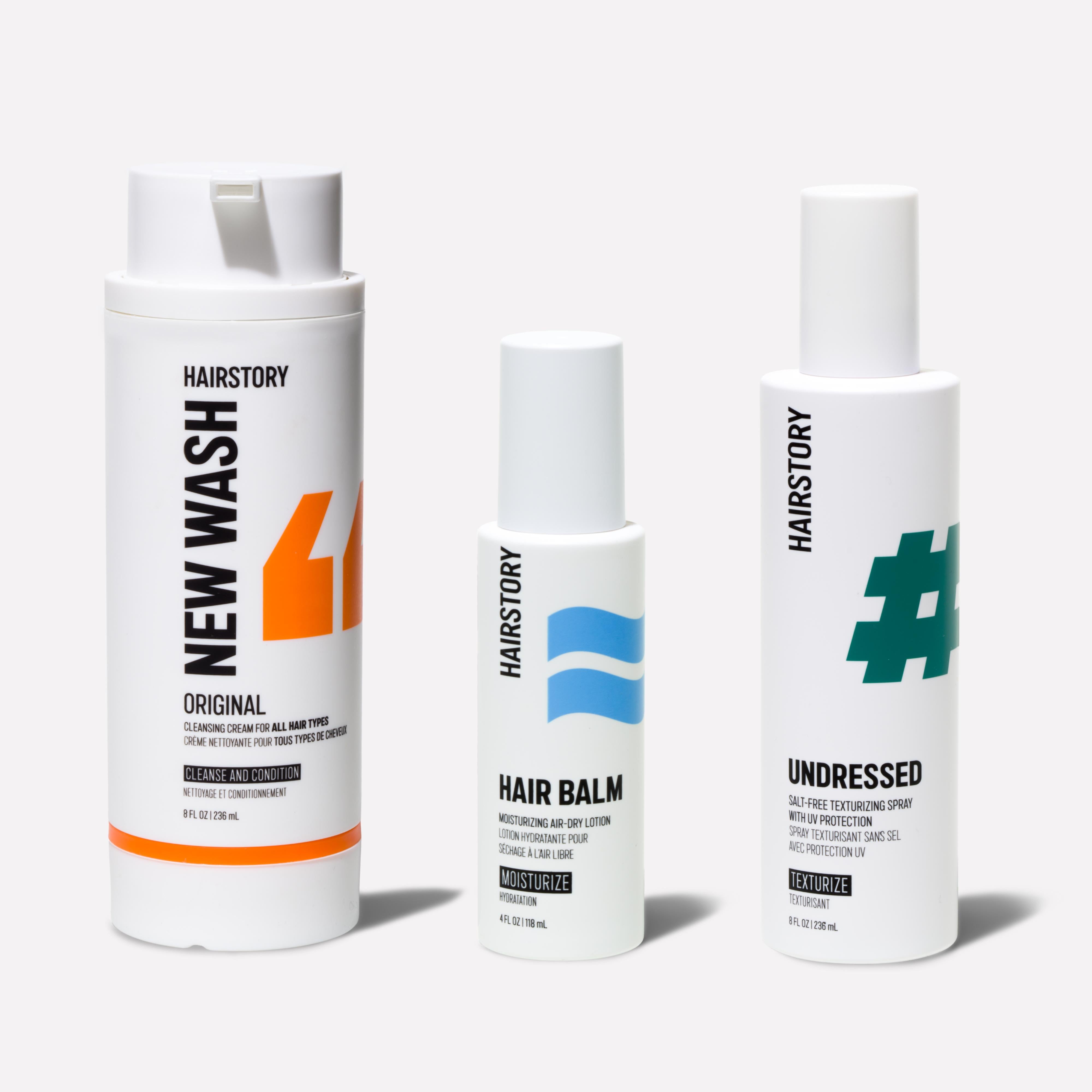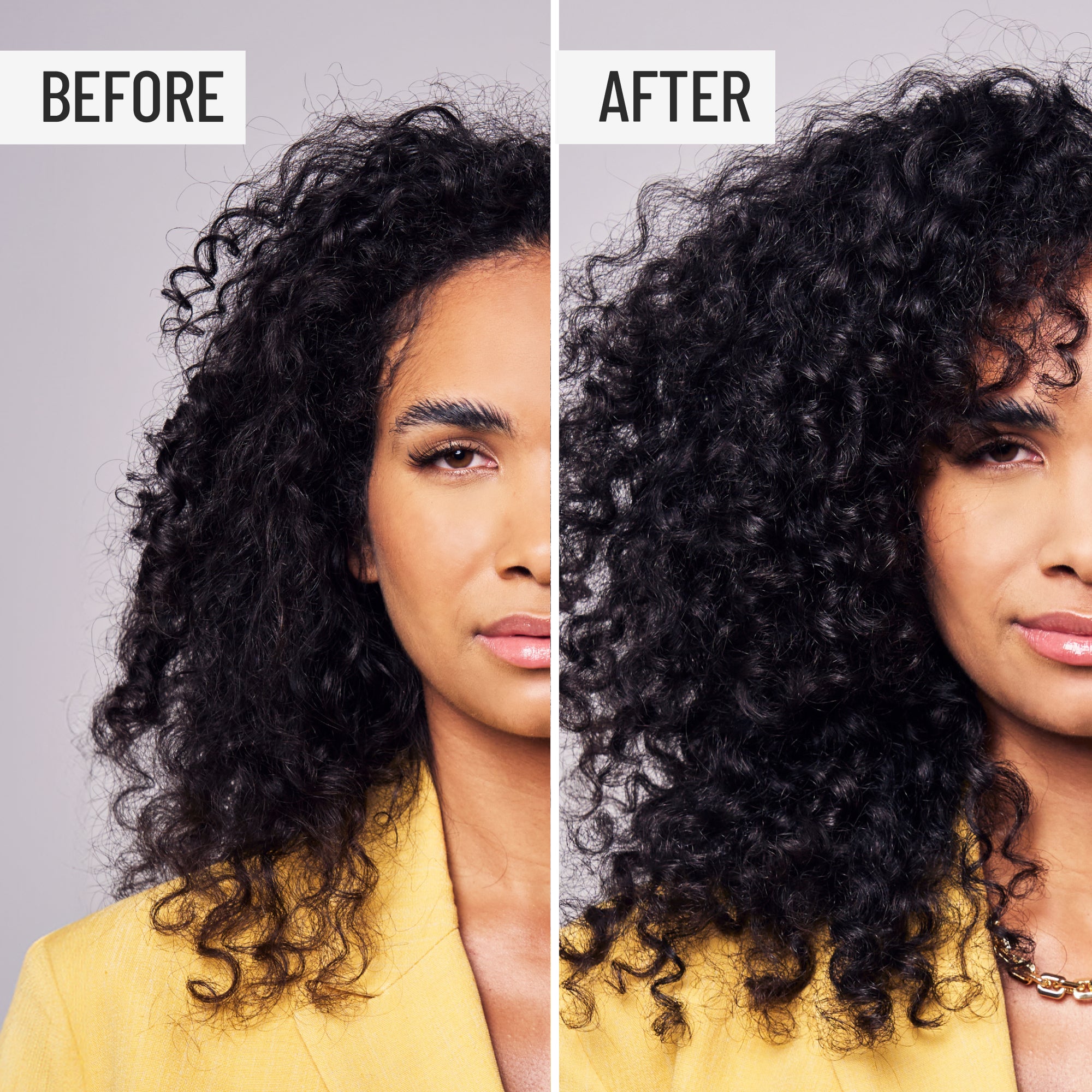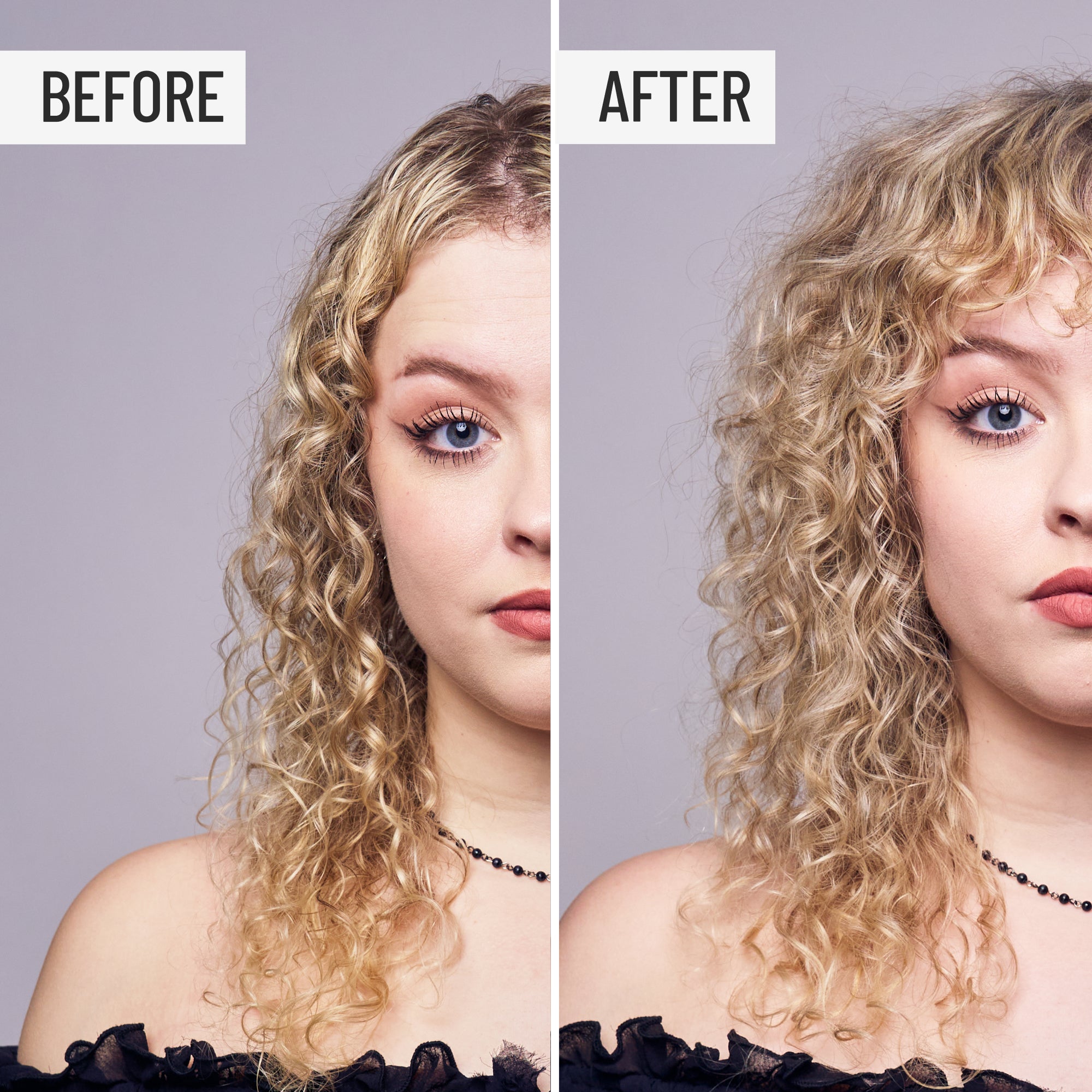Naturally textured hair possesses qualities that people with straight hair can only dream of: volume, character, and shapes no heat tool can imitate. But as wonderful as natural texture can be, it takes some time and attention, and it’s prone to dryness. So if you want to embrace your texture in all its glory, it’s important to know how to moisturize natural hair effectively.
We turned to our texture expert, hairdresser Jennifer Covington-Bowers, who cuts and colors hair for her private clientele when not running the gauntlet backstage at Fashion Week in New York, Paris, and Milan. She is a fierce advocate for racial inclusiveness in the beauty and fashion industries and strongly believes that every hairdresser should have the skills and knowledge to work with every hair type. Here’s what she said about moisturizing curly hair and nurturing natural texture.
WHAT IS NATURALLY TEXTURED HAIR?
Natural texture refers to hair that waves, curls, or kinks, regardless of genetics (although the term “textured hair” is commonly used to describe natural Black hair). At first glance, you might assume that all natural hair is coarse hair, but the opposite is actually true: Many natural hair types are fine, and fragile.
Natural hair encompasses a wide variety of textures and types of curls, so before you go any further, it’s important to answer one key question: “What type of hair do I have?” Curly hair can range from gentle, S-shaped waves to tight, springy coils. Once you identify your hair type and curl pattern, you can better determine the most appropriate and effective hair care routine.
WHY IS MY NATURAL HAIR SO DRY?
Natural texture hair is often dry for two primary reasons: It either lacks natural, moisturizing oils, or its type makes it inherently prone to dryness.
Before we dive into those two causes, however, it’s important to understand the difference between hair hydration and moisture. Hydration refers to the water levels of the inner fiber of your hair strands. Proteins, amino acids, and even humidity in the air can work to keep your hair hydrated. Moisture, on the other hand, is applied to the outer layer of your hair to regulate its hydration. A moisturizing product acts as a seal to keep hydration from escaping.
Armed with that knowledge, you can more effectively address the two primary causes of dry hair:
Lack of Natural Oils and Moisture
Your scalp may not produce enough of the natural and moisturizing oils that condition hair. This can be hereditary or the result of a slowdown in oil production due to age (which is the same reason that mature skin often appears dry). Alternatively, you may be over-washing your hair or using shampoo made with harsh detergents that strip strands of their natural oils.
Predisposition to Dryness
On the other hand, your hair may simply be in poor condition because it has an innate shape and structure (such as natural curls) that make it naturally prone to dryness.
A strand of hair is made up of three distinct layers. At the center is the medulla, which is where the core fibers live. Surrounding the medulla is the cortex, which gives your hair its shape, resilience, elasticity, and curl. Protecting the cortex on the surface is the cuticle, composed of overlapping cells that resemble shingles on a roof.
When the shingle-like cells lay flat and tight, hydration is safely sealed inside and hair appears glossy and shiny. When the cells are rough and loosened, hair can appear more matte – but worse, hydration can easily escape from the core, which can lead to dryness and, eventually, fragility.
WHAT MAKES NATURAL HAIR DRY?
Now that you know the two root causes of dryness, you can evaluate the individual factors that may be contributing to your own dry hair and learn how to moisturize it more effectively.
Factor 1: Over-Washing & Under-Conditioning
Traditional shampoos contain detergents that strip hair of its natural oils – your best possible conditioners. Washing too frequently, especially with harsh shampoos, can leave your hair dry unless you also use a conditioner to replace that moisture. However, while conditioners can help mask breakage and make hair soft, smoother, and appear healthier, they cannot actually repair damage or restore hair to mint condition.
Solution: Wash Responsibly
One of the most effective strategies to keep natural hair moisturized is to wash your hair only as often as necessary with a gentle shampoo, focusing your effort at the scalp, rather than at your naturally dryer ends.
For moisturized hair, we recommend trying a detergent-free shampoo alternative, like New Wash revitalizes dry hair with aloe vera blended with essential oils. New Wash also conditions while cleansing, saving you time – and money on additional hair products.
Wash your hair less often
The last thing dry, coarse hair needs is daily washing. Try going a few days between washes to give your scalp a chance to replenish the oils you normally cleanse away. If your hair gets too flat or oily, a dry shampoo like Powder can refresh it in no time. How often should you wash to maintain optimal moisture levels? It depends on a number of variables, including your hair type, lifestyle, and what your hair and scalp are currently used to.
Condition liberally
You may not cleanse your hair each time you shower, but you should continue to use conditioner and rinse on a daily basis to keep your hair hydrated. One moisturizing technique that’s gaining traction among those with afro-textured hair involves the progressive application of liquid, oil, and cream, to bathe hair in moisture and seal the hair cuticle. There are several variations of this process, referred to as the LOC method, depending on your hair porosity, or how your hair strands absorb or repel water.
You can also improve dry hair and control frizzy curly hair with a daily dose of a leave-in conditioner, such as Hair Balm. Also try occasional deep conditioning treatments, like hair masks, for an extra moisture boost.
Factor 2: Hair Styling
Blow dryers, flat irons, curling irons, and hot rollers are amazing tools to help you achieve nearly any hairstyle you can imagine, but they can also wreak havoc on your hair shaft and cuticle.
“High temperatures strip natural moisture, especially when in direct contact with dry hair,” cautions Covington-Bowers. Likewise, using irons on very wet hair at temperatures well above boiling can do just that: boil your stands and cause all sorts of integrity issues.
Solution: Heat-Style Safely
1. Use liquid protection. Before you style, use a heat-protecting product to minimize damage. Whether you have straight hair or coily hair, choose styling products that are specifically designed for heat protection and contain ingredients like copolymers, proteins, and essential oils to insulate hair from heat and prevent moisture loss – like Dressed Up.
2. Cool it down. Make sure your styling tools feature variable temperature settings. Some irons and blow dryers heat up to 450 degrees, but a maximum of 400 degrees is enough to get the job done. Work quickly to limit the time you expose your hair to heat.
3. Unplug. Expand your repertoire of styling options and embrace those that don’t require heat styling every day. A leave-in conditioner, for example, can allow your hair to air dry into effortless waves.
Whether you’re using heat or not, avoid any maneuver that goes against the grain of the cuticle. Instead, work with the grain – root to end – to encourage those shingles to lay flat and keep moisture in. For example, always point your blow-dryer nozzle away from the scalp, and avoid backcombing and teasing.
Factor 3: Environmental Exposure
Summer can be fun, but not when the sun’s UV rays, extremely dry weather, and water sports threaten your hair’s natural moisture levels. The good news is that these factors are the easiest to control to prevent dry hair.
Solution: Add Protection
Before you venture into the sun, cover your hair with a hat or a scarf. There are a few UV-protecting hair products available, but don’t expect to see SPF numbers on them as you would sunscreen for your body.
If you’re a swimmer, avoid letting chlorine touch your hair. Wear a swim cap, thoroughly wet your hair before diving in, or coat your hair with a water-repelling oil to reduce the amount of chlorine it absorbs. After the pool, rinse your hair while it’s still wet; dried chlorine is difficult – if not impossible – to remove. A few of these practices can protect your hair and keep your cuticles moisturized.
Factor 4: Chemical Treatments
Hair color, highlights, relaxers, perms, and chemical smoothers can all cause healthy hair to become unnaturally dry, especially if you experiment with at-home versions.
Solution: Consult Your Colorist
1. Ammonia-free hair color: Ask your hairdresser about ammonia-free permanent and demi-permanent color formulas and other options that are gentler for dry hair. Innovations in the hair color category include formulations that bleach hair and add color simultaneously, lessening the negative chemical impact and saving time at the salon.
2. Hair painting: Ask about having your color or lightener hand-painted onto only your hair’s mid-lengths and ends. This creates a softer transition between your natural color at the root to where the artificial color is placed. It also allows regrowth to come in without a hard line of demarcation. This technique is more forgiving and requires bleaching less frequently.
3. Embrace natural texture: It can be a big decision, but it may be time to consider alternatives to chemical smoothing services. “A weekly blow-dry or an occasional flat-ironing while learning to love your hair the way it grows might be rewarding,” says Covington-Bowers. Of course, she respects individual choice to use permanent straightening treatments for the ease of styling, but she encourages being aware that there are trade offs when it comes to overall hair condition.
Embrace What’s Yours
Moisturizing curly hair and other natural hair textures requires a thorough understanding of what to do (ditch detergents, go with the grain, condition liberally) and what not to do (use extremely high heat, expose your hair to harsh environmental elements, layer on chemical treatments). Learning how to keep natural hair moisturized will allow you (and your hair) to look and feel your best.
Beautiful, natural texture is your birthright, so don’t let dryness stop you from claiming it. Treat your naturally curly hair with kindness!































